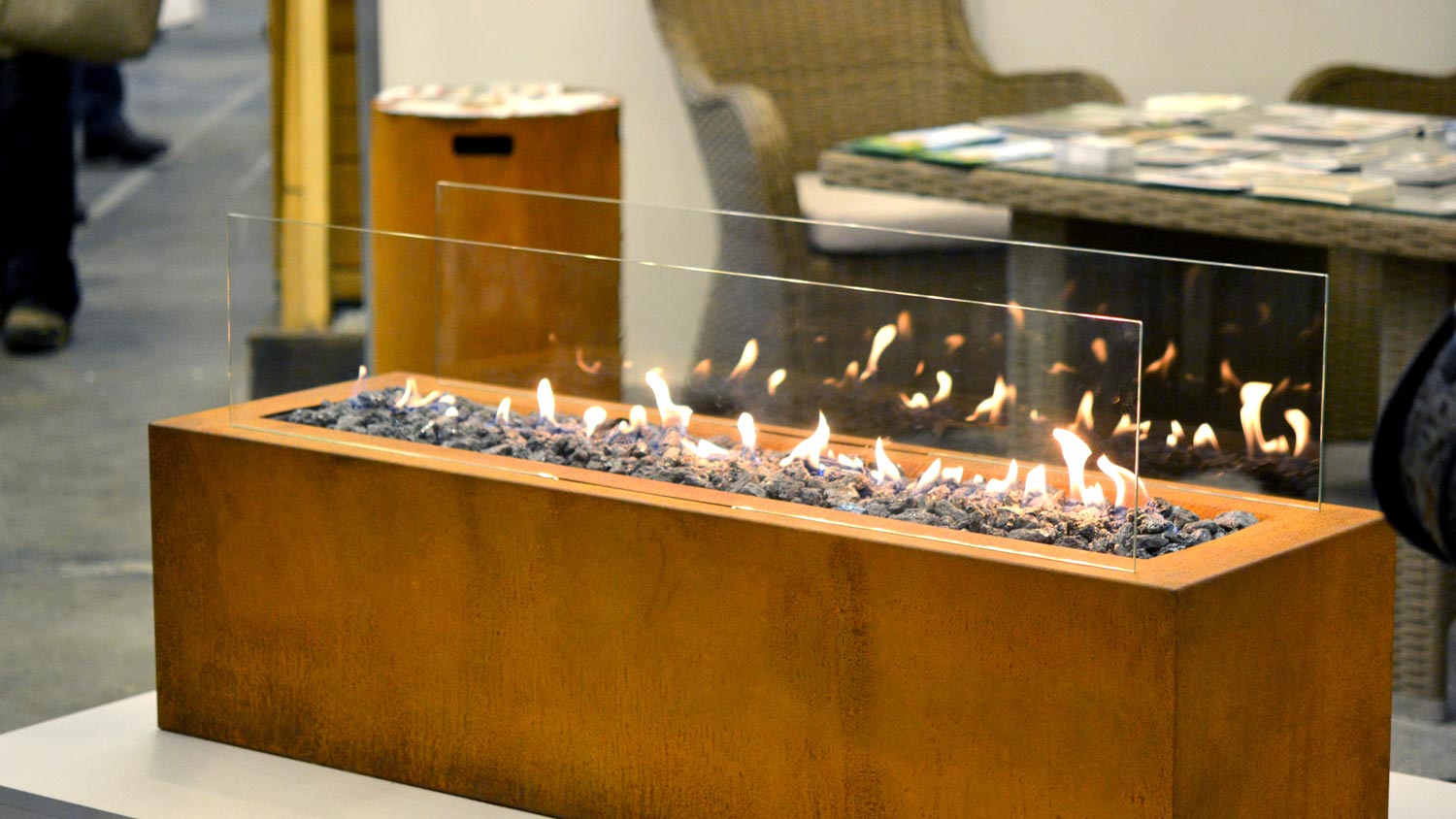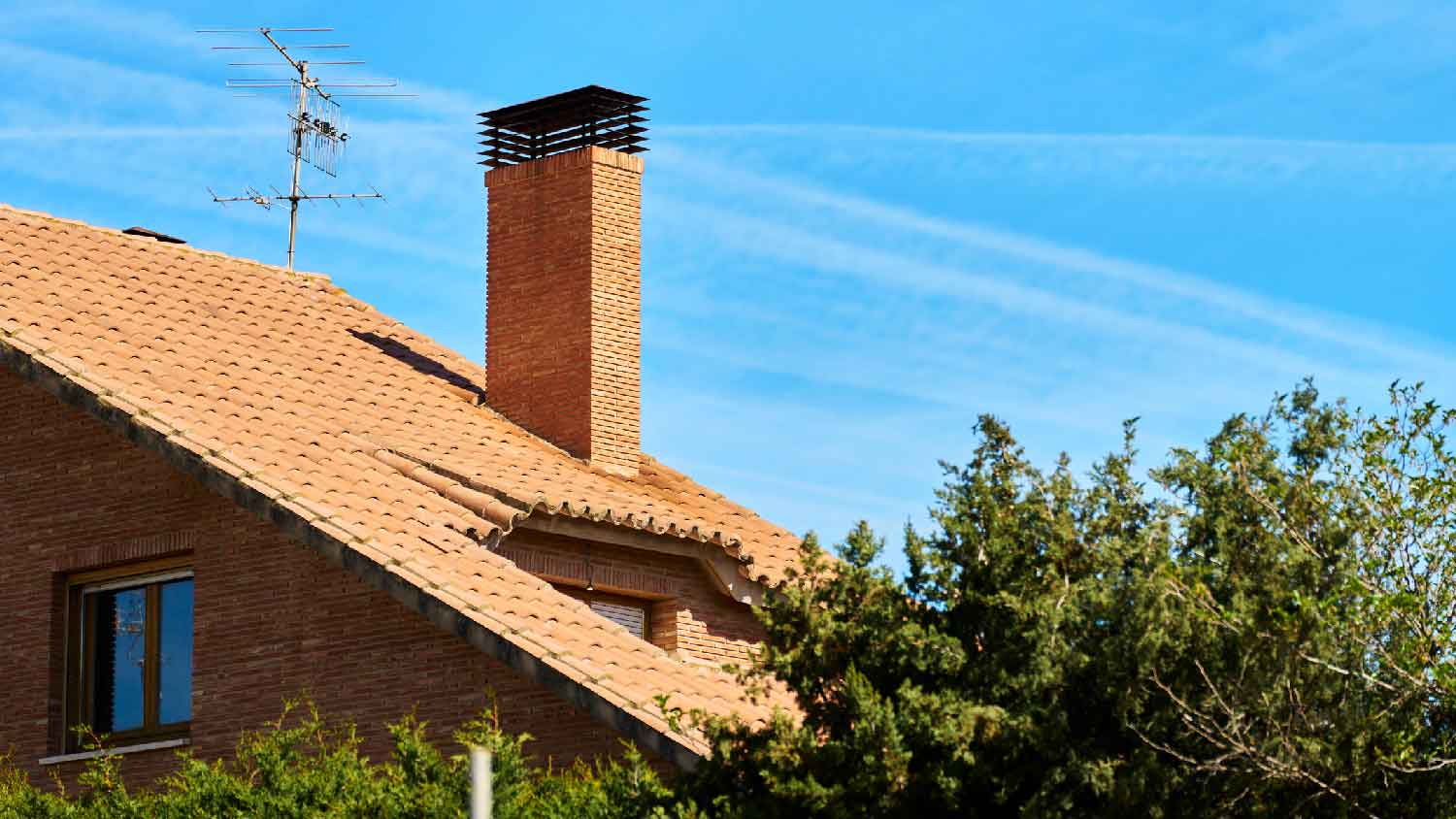
This guide shares information about the cost to remove a gas fireplace, including the average price to additionally remove the breast, stack, and chimney flue as well as which experts will be needed to complete the project.
Safety first, cozy vibes second


There’s nothing quite like curling up next to a cozy fire—but first you have to light it. Luckily, a gas fireplace makes the process simple, with no wood-burning logs and kindling required. But there are certain safety protocols you need to follow. This guide will show you how to light a gas fireplace in a few simple steps, based on the model.
Before you can determine how to start your gas fireplace, you need to figure out what type of fireplace you have. Do you control the gas using a control panel, metal key, remote, or switch? When in doubt, always default to the owner’s manual.
If you don’t follow proper safety protocols, gas fireplaces can quickly become a fire or carbon monoxide hazard. Before you start, keep these safety tips in mind:
Read the owner’s manual
Keep flammable objects at least 3 feet away from your fireplace
Don’t touch the glass on the front of the fireplace unless you’re certain it’s cool
Regularly test your carbon monoxide detectors
If you smell gas and your fireplace won’t ignite, turn off the gas supply, leave your house, and call 911

The trickiest gas fireplaces to light often come with a control panel. Luckily, these panels aren’t as hard to use as they look. These steps can help you get started (but always read your owner’s manual to be sure).
The control panel hides behind an access panel. It’s usually a screen or decorative panel that blends into your fireplace’s frame or surround. Remove the access panel to find the controls. Most of the time, you can just pop it off.
Locate the control knob. Depending on the model, it might be labeled “valve control” or “pilot control.” The knob is marked with the following positions:
Off
Pilot
On (in some models, this is swapped out for a series a numbers)
If the knob is in the on position, turn it off and wait a few minutes before trying to turn on your fireplace. This gives old gas a chance to dissipate, so it’s not a hazard.
Some gas fireplaces come with an emergency gas shut-off valve. You’ll need to open it before you can light your fireplace. Look for the knob or switch, then turn it so it’s parallel to your gas line.
When you’re ready to ignite your fireplace, twist the control knob to the pilot position. Press the knob down and hold it in place. This will start the flow of gas.
Locate your fireplace’s ignition switch—a red button near the control knob or a switch labeled “ignitor.” While you’re holding down the control knob, click the ignition switch once every second until the pilot light is lit. This may take several attempts.
Once the pilot light is on, hold the control knob for 15 to 30 seconds to make sure it stays lit. Some models may have a different suggested length of time. Always check the manual. Release the knob. If the flame goes out, repeat the previous steps or call a gas plumber near you.
Rotate the control knob to the “on'' position, then adjust the size of the flame. Some models will have numbers that correlate with different flame heights. Others will simply have an “on” position with high or low options.
Put the access panel back over the control panel, and enjoy your fire.
Some gas fireplaces use a metal key instead of a knob to control the flow of gas. They’ll have a round, decorative slot somewhere near the fireplace where you can insert the key. Read the manual and follow these steps to learn how to start a gas fireplace with a key.
Before you start, you’ll need to remove the fireplace cover. Typically, this is a glass panel that separates the fire chamber from the rest of the room. If you used the fireplace recently, the glass panel might be too hot to touch, so you’ll have to wait.
Search for a round, decorative slot. This is the gas valve where you’ll insert your key. It’s usually somewhere towards the bottom of your fireplace, either on the surround or the floor.
Insert the key into the valve. Do not turn the key until you’re ready to light your fireplace immediately. Turning the key starts the flow of gas, and releasing too much gas poses a risk.
Use a long lighter, like a barbeque lighter, to light the pilot burner with the following steps:
Hold the lighter next to the burner
Turn on the lighter so there’s a flame
Turn the key in the gas valve counterclockwise
This starts the flow of gas and should immediately light the burner. If you can’t reach the key while holding the lighter on the burner, enlist someone to help.
Once your fireplace is lit, put the protective cover back on your fireplace.
Rotate your key to adjust the height of the flame.
If your fireplace comes with a remote or you notice a switch near the gas fireplace surround, you probably have an electric ignition. This is common with newer gas fireplaces. These are the simplest to operate. Just hit the switch so it’s in the “on” position or press the “on” button on the remote.
Gas fireplaces work in a way that's similar to other natural gas appliances like water heaters and stoves. First, gas travels through a gas line to the main burner. As it’s released from the main burner, it will come into contact with a spark ignitor (a type of electric ignition) or pilot light (a small, continuously lit flame) which ignites the gas and creates your cozy fire. There are three main types of gas fireplaces. Each one starts differently using either:
A control panel
A metal key
A remote or switch
If your gas fireplace uses a pilot light, you’ll probably need to light it using a control panel. If your fireplace has an electric ignition, it will likely start using a remote or switch. The former is traditional, while the latter is more popular in newer models.
A gas fireplace with an electric ignition won’t light if you’re in the midst of a power outage. If you’re having issues with electronics on the same circuit, try resetting the circuit breaker. Otherwise, you can follow this guide to troubleshoot your gas fireplace.
The truth is there are many reasons your fireplace won’t ignite. Most commonly, it’s because you need to relight your pilot light, which can be knocked out by something seemingly innocuous like a draft. Other times, you may have forgotten to open the gas valve. If that’s not the case, you may have a more serious issue that requires professional intervention.
Overall, the best way to prevent your gas fireplace from malfunctioning is to perform proper maintenance. Hire a fireplace inspector near you to perform an annual inspection. Most service calls for gas fireplaces cost about $100, and repairs for pilot lights cost $150 on average.
Most of the time, homeowners can start a gas fireplace on their own. Costs only arise when there are issues or you need regular maintenance. On average, the cost to repair a fireplace is anywhere from $100 to $2,000—but it depends on what’s wrong. For example, if you don’t know how to light the pilot light on a gas fireplace, expect to pay a professional $100 to do it for you. Serious problems with your gas line will cost more to fix.

Most of the time, homeowners can light their gas fireplace on their own. You may even feel comfortable relighting a pilot light that has gone out—but keep in mind that messing around with gas appliances can be extremely dangerous.
If you’re having trouble lighting your fireplace, it’s best to call a local gas fireplace service. They’ll know how to fix your issue without risking your safety. If you smell gas while lighting your fireplace, do not attempt to fix the problem on your own and don’t wait to call a professional. Shut off the gas supply, leave your house, and call 911.
From average costs to expert advice, get all the answers you need to get your job done.

This guide shares information about the cost to remove a gas fireplace, including the average price to additionally remove the breast, stack, and chimney flue as well as which experts will be needed to complete the project.

Want a safer, cleaner alternative to your traditional fireplace? Use this guide to determine the cost to convert a fireplace to gas in your home.

A fireplace remodel cost depends on the extent of the remodel and the materials you choose. Use this guide to calculate your costs and budget accordingly.

Smart chimney inspection questions can help prevent your fireplace from going up in smoke. Here’s what to discuss before hiring a chimney sweep.

If you have a wood-burning fireplace, it’s important to understand what causes chimney fires so you can reduce the risk of a fire in your home.

Need to know how to clean a gas fireplace? Our guide includes the steps, cost, time commitment, and tools you’ll need to get your fireplace looking good as new.